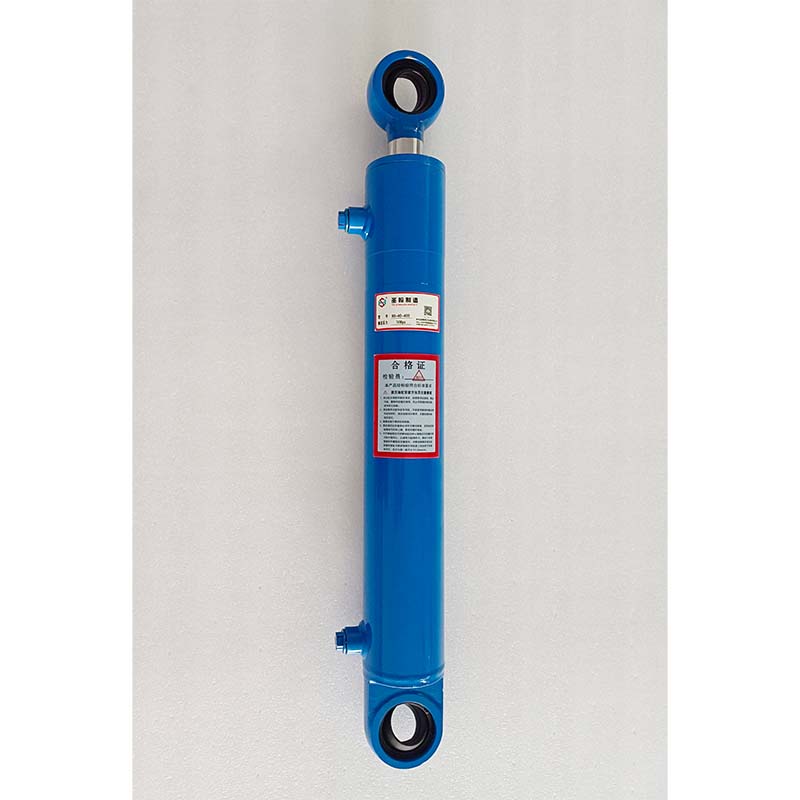ធ្នូ . 17, 2024 11:44 Back to list
Guidelines for Properly Bleeding Hydraulic Cylinders in Various Applications
Hydraulic Cylinder Bleeding A Comprehensive Guide for Manufacturers
Hydraulic systems are the lifeblood of various industrial and mechanical applications, offering unparalleled force and efficiency in moving heavy loads. Among the critical components of these systems are hydraulic cylinders, which convert hydraulic energy into mechanical force. However, like all machinery, hydraulic systems require regular maintenance to function optimally. One pivotal aspect of this maintenance is the process of bleeding hydraulic cylinders. This article aims to provide a comprehensive overview of hydraulic cylinder bleeding for manufacturers, ensuring optimal performance and longevity of hydraulic systems.
Understanding Hydraulic Cylinder Bleeding
Bleeding a hydraulic cylinder is the process of removing trapped air from the hydraulic system. Air can enter the system through leaks, maintenance procedures, or when fluid levels drop. The presence of air can lead to various problems, including erratic cylinder movement, decreased efficiency, and even potential damage to the hydraulic components. Air in the system causes compressibility, which can result in a spongy feel during operation, leading to a significant reduction in the reliability and safety of hydraulic operations.
Importance of Bleeding Hydraulic Cylinders
1. Enhanced Performance Removing air from the hydraulic fluid ensures smooth operation of the cylinder, allowing for precise control over movement and force. This is particularly vital in applications requiring high precision, such as in manufacturing or assembly systems.
2. Prolonged Equipment Life Trapped air can lead to cavitation, which causes pressure fluctuations that can damage seals and other components within the hydraulic system. Regular bleeding can mitigate wear and tear, extending the lifespan of the hydraulic cylinders.
3. Safety Considerations A properly bled hydraulic system reduces the risk of unexpected cylinder behavior that could lead to accidents or injuries. Manufacturers have a responsibility to ensure that safety protocols are followed to protect their workforce.
The Bleeding Process
The bleeding process can vary slightly depending on the specific hydraulic setup, but the general steps remain consistent
1. Preparation Ensure that all necessary tools and equipment are available. This includes a suitable hydraulic fluid, a bleed valve or screw, a container to catch excess fluid, and personal protective equipment such as gloves and goggles.
2. Access the Bleed Valve Locate the bleed valve on the hydraulic cylinder. Most cylinders will have a designated bleed screw, usually located at the highest point on the cylinder.
3. Fill the Reservoir Before beginning the bleeding process, ensure that the hydraulic fluid reservoir is filled to the appropriate level. This prevents additional air from entering the system during the bleeding process.
hydraulic cylinder bleeding manufacturer

4. Open the Bleed Valve Slowly open the bleed valve or screw using the appropriate tool. Fluid will start to escape along with any trapped air.
5. Cycle the Cylinder As the fluid is expelled, cycle the hydraulic cylinder through its range of motion several times. This action helps to expel more air from the system.
6. Close the Bleed Valve Once a steady stream of fluid flows from the bleed valve without bubbles, close the valve securely.
7. Check the System After bleeding, check fluid levels again and top off if necessary. Ensure that no leaks are present around the bleed valve and other connection points.
8. Documentation It’s essential to document the bleeding process, noting the date and any observations. This helps in maintaining a reliable maintenance schedule.
Best Practices for Manufacturers
To ensure the effectiveness of hydraulic cylinder bleeding, manufacturers should consider implementing the following best practices
- Regular Maintenance Schedule Establish a routine maintenance schedule that includes bleeding the hydraulic cylinders. Regular intervals depend on the system's usage and operating conditions.
- Training Ensure that staff are adequately trained in the procedures and the importance of maintaining hydraulic systems. Knowledgeable employees will contribute to a safer and more efficient working environment.
- Use Quality Fluids Always use the manufacturer-recommended hydraulic fluids to minimize the risk of contamination and ensure compatibility with seals and other system components.
- Monitor System Performance Keep an eye on the performance of hydraulic cylinders. Any irregularities such as unusual noises or irregular movements should be investigated promptly to prevent potential failures.
In conclusion, hydraulic cylinder bleeding is a vital maintenance procedure that manufacturers must prioritize to ensure the efficiency and safety of their hydraulic systems. By understanding and implementing proper bleeding techniques, as well as adhering to best practices, manufacturers can enhance the performance, safety, and longevity of their hydraulic equipment, ultimately leading to a more productive and sustainable operation.
-
Fork Lift Power Units - Hebei Shenghan | Efficiency, Reliability
NewsJul.13,2025
-
1.5-Ton Turbocharged Cylinder-Hebei Shenghan|Hydraulic Solution,Energy Efficiency
NewsJul.13,2025
-
Auto Hoist Power Units-Hebei Shenghan|Efficiency&Industrial Lifting
NewsJul.13,2025
-
Double Acting Power Units-Hebei Shenghan|Hydraulic Solutions,Industrial Efficiency
NewsJul.13,2025
-
1.5 Ton Lifting Cylinder 70/82-40-290-535 - High-Performance Hydraulic Solution | Hebei Shenghan
NewsJul.13,2025
-
Fork Lift Power Units - Hebei Shenghan | Efficiency&Reliability
NewsJul.13,2025
